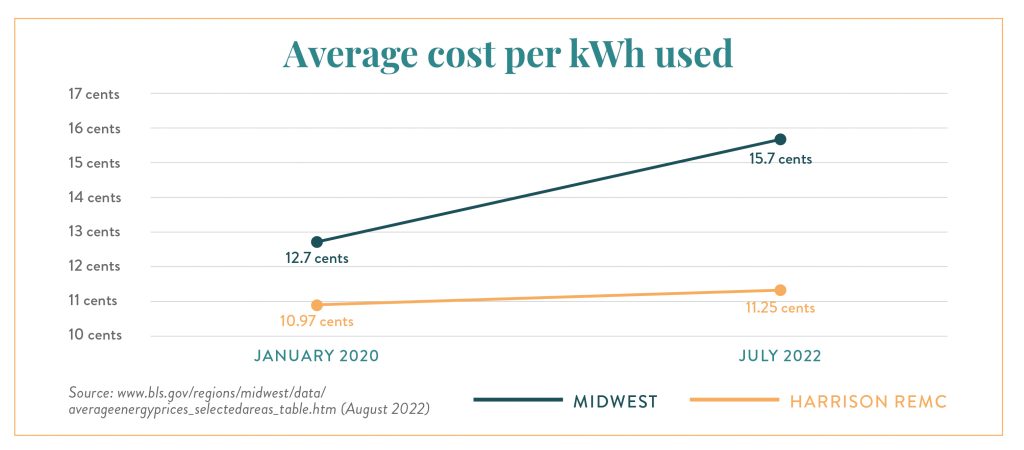
Inflation reached a 40-year high of 9.1% this past June and continues to be a huge driver in the increased costs of many consumable goods including electricity.
In addition to the record inflation, supply chain issues, labor shortages, and increasing prices for natural gas and other fuel sources have applied upward pressure on wholesale fuel related expenses.
Harrison REMC’s employees and directors work hard to keep your local cooperative in sound operating condition. Management and the REMC board consider the needs and expectations of the membership (reliable service at a reasonable price) while ensuring a skilled workforce is equipped with the necessary tools to perform duties in a safe and efficient manner.
Due to the many factors stated above, electricity costs are on the rise in the United States. From January 2020 to July 2022, the average price for electricity in the Midwest has increased from 12.7 cents to 15.7 cents per kWh, or 23.6%. Although Harrison REMC is not immune to these upward price pressures, we have been able to maintain stable rates with electric rates increasing from 11 cents per kWh to 11.3 cents per kWh or 2.6% during this same period.
It is anticipated that the REMC’s wholesale power costs will see additional increases this winter due to the increasing costs for fuel. Wholesale power cost increases are passed directly to our members through a power cost tracker.
Due to these increases in the cost of vehicles, electric equipment, labor, and fuel related costs, the REMC will need to increase its base rates by an average of 1.7% this month. The last increase for local distribution expenses was in November 2021 for 1.75% and that was the REMC’s only rate increase over the previous four years.
When comparing the REMC’s rates to other cooperatives and investor-owned utilities (like Duke Energy) in Indiana, Harrison REMC is one of the lower cost providers in the state.
Since the REMC operates on a not-for-profit basis, these low operating costs translate into lower electric rates. Our rates are lower than the state average and national average when compared to all electric utility companies. Now consider the fact that electric cooperatives provide service to more rural areas of the county than investor-owned utilities and municipalities do. When a cooperative like Harrison REMC (10 members per mile of line) can provide rates equal to or lower than other municipal and investor-owned utilities (32 customers per mile of line) at any level, you can be assured that the local cooperative non-for-profit model is working for you.
We appreciate your comments and suggestions throughout the year and will continue to work hard to keep costs minimized, while offering reliable electric power and services that meet the needs of the membership.





